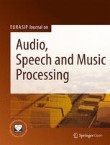Integrated exemplar-based template matching and statistical modeling for continuous speech recognition
We propose a novel approach of integrating exemplar-based template matching with statistical modeling to improve continuous speech recognition. We choose the template unit to be context-dependent phone segment...
